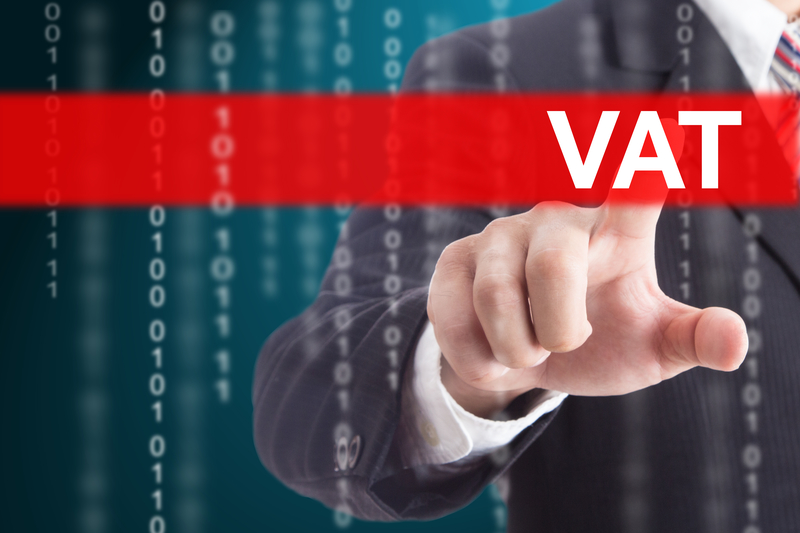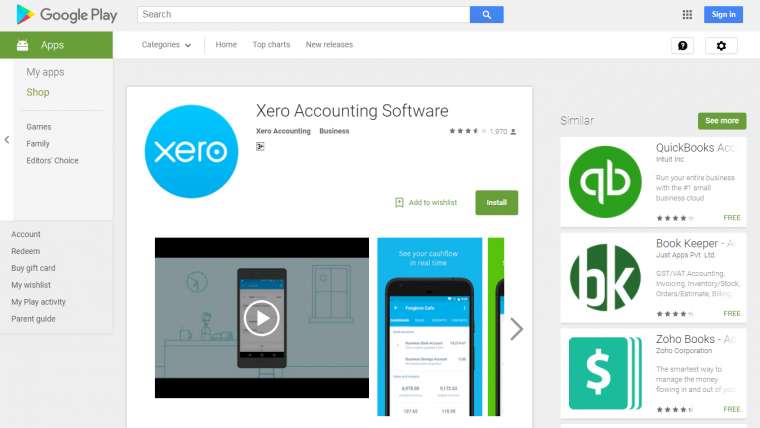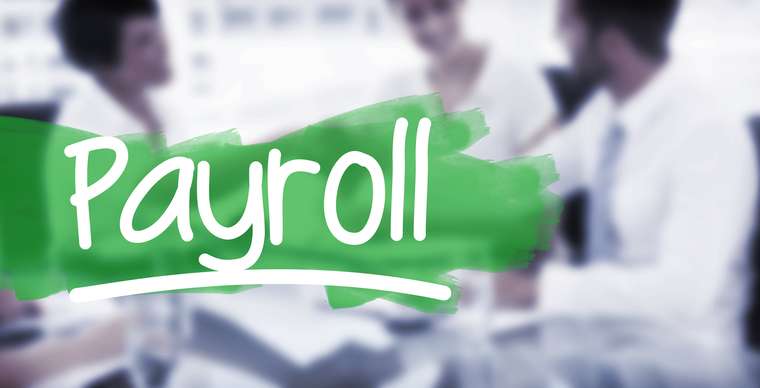
What is VAT?
Value Added Tax (VAT) is a charge that is placed on the sale of business goods or services in UK.
A business will pay their VAT to HM Revenue & Customs. The amount paid is worked out by calculating the amount of VAT charged to customers minus any VAT they have paid on their own purchases through their business.
Not all goods and services are VAT chargeable. All goods and services are classed as either being VAT-rated or VAT-exempt. This means that certain things are free from VAT levies being applied to them. Such examples are finance, insurance, gambling, health services, private education, rent and postal services.
See our VAT Returns Service
When do I need to register for VAT?
You are obliged to register your company for VAT with HMRC once your turnover meets the Government defined turnover threshold. So if over the past 12 months if your ‘taxable supplies’ have reached or exceeded the VAT threshold, you will need to register for VAT. This is based on your sales or turnover and not your actual profit from your business.
It doesn’t matter how small or large your business, or how your business is structured, you will need to register for VAT once your turnover reaches the current threshold (from April 2017, the VAT registration threshold is set at £85,000). The threshold tends to increase each April, but your VAT is calculated on a rolling basis meaning that you will need to keep track of your taxable turnover for a rolling 12 month period rather than a specific tax year or calendar year. So for example, should your total turnover over the previous 12 months reach or exceed £85,000, you’ll need to register for VAT.
What are the advantages of registering for VAT?
There are advantages for registering for VAT whether your business reaches the current VAT threshold or not. You can choose to voluntarily register for VAT when your turnover is below the threshold and this can actually work in the favour of small businesses who choose to do so.
It can be easy to lose track of your turnover, especially when your time is taken up elsewhere in your business. Should your turnover creep up and exceed the registration threshold without you realising it, you may find yourself receiving an angry letter from HMRC along with a financial penalty for failing to register your business. By voluntarily registering, you can avoid any financial penalties and not have to worry about passing the threshold.
Registering for VAT whether above or below the current threshold will also greatly help you to boost your business profile. This can be especially helpful for new businesses just starting out without any track record or well established reputation to fall back on.
Being VAT registered can make you look like a serious company that is trustworthy and able to rub shoulders with the big companies. You will give the impression that you business is larger and more well organised and established than it may actually be.
Being VAT registered can also open more doors for your business. Many companies and organisations will only agree to do business with other companies that are VAT registered. Many larger corporations are unwilling to trade with SMEs or sole traders that cannot produce a VAT invoice. Once registered you will be issued with a VAT registration number and this can make it much easier to deal with other businesses.
One great advantage of being VAT registered is that you can claim back VAT on the goods and services that you buy for your business. There is an obvious extra value here to any company that sells zero rated goods or services. Because you can claim back the VAT on the things that you consume, you may actually receive money back from HMRC as VAT refunds.
When you voluntarily register for VAT, you can also claim back VAT from the past 4 years of trading. So if your company has been running for a few years before registering, you can still reclaim VAT as long as you have kept up to date VAT records.
When you get your VAT registration number, you should display it on all of your business stationery and website. Doing this makes a statement that you are a serious business and gives your company a professional touch that people will trust.
How do I register for VAT?
Registering for VAT is very easy. Most businesses can register for VAT online, this includes partnerships, SMEs, sole traders and a collective group of companies registering under one VAT number.
When you register online, you will be creating your own VAT online account known as your Government Gateway account. This is a very useful portal for submitting your VAT Returns to HM Revenue and Customs (HMRC).
If you register for VAT over the phone or through the post, once you have received your VAT registration number, you can go online and sign up for a VAT online account to make things easier for you for future submissions.
If you cannot register online you must register by post using a VAT1 form. You can also use this form if you want to apply for a ‘registration exemption’ or you are joining the Agricultural Flat Rate Scheme.
If you prefer, you can choose to use an agent to handle your VAT returns for you. You could appoint an accountant for example who would deal with HMRC on your behalf and will take care of your returns for you so you don’t have to.
How long do I have to wait before I receive my VAT number and Certificate?
Once registered either online, or using the paper form VAT1, you will normally receive your VAT registration certificate within 14 working days but can be up to one month. You can get this via your VAT online account, or via the post when an agent registers you or you cannot register online yourself.
Your registration date will be your date of effective registration with HMRC, so your VAT will be due from this date.
When should I start charging VAT on sales?
Once you have registered for VAT and have your registration date, you will be able to start charging VAT from that date. This will be the date when you are liable to pay VAT to HMRC, so you will want to start charging your customers VAT from that same date.
See our online accounting serivces
How do I calculate VAT?
When charging VAT on your goods or services you will need to work out what to charge. You will also need to calculate how much VAT you can claim back on goods or services that were sold inclusive of VAT.
VAT-inclusive prices :
To work out a price including the standard rate of VAT (currently 20%), multiply the price excluding VAT by 1.2.
To work out a price including the reduced rate of VAT (currently 5%), multiply the price excluding VAT by 1.05.
VAT-exclusive prices :
To work out a price excluding the standard rate of VAT (currently 20%) divide the price including VAT by 1.2.
To work out a price excluding the reduced rate of VAT (currently 5%) divide the price including VAT by 1.05.
Can I register for VAT before I reach the required threshold amount?
Yes, you can voluntarily register for VAT before your company turnover reaches the current registration threshold. There are a great number of advantages to doing this.
Currently, the VAT registration threshold is set at £85,000 for 2017-18. This refers to the taxable turnover of your company, meaning the overall income coming in from sales, but not your actual profits made from those sales.
It is a legal requirement to register for VAT once your turnover reaches the current threshold, but you can voluntarily register for VAT when your turnover is still below this level.
The benefits of voluntarily registering your company for VAT means that you can do the following:
- VAT can be applied to the sale cost of your VAT rateable goods and services being offered
- You can build credibility in your business by registering for VAT
- You can make your business more appealing to other businesses, your clients, investors and creditors
- You can reclaim VAT on most goods and services that you buy for your business
- Your business will look bigger than it actually is as most will assume you have a turnover greater than £85,000 because you are VAT registered
Because you will be issued with a VAT Registration number that you can use on your stationery and website etc. you will look more professional and other firms will be more willing to deal with you.
You can also claim back VAT on purchases for your business for up to the previous 4 years if your business has been going for this long.
How often will I need to pay VAT?
As a VAT registered business, you will be expected to submit a VAT return along with payments each quarter to HMRC.
You will receive a VAT return from HMRC that will need to be returned no later than 30 days following the end of the quarter – the date will be clearly marked on the VAT form. Should you fail to submit your VAT return within those 30 days, your company will face financial penalties.
For a business that expects their taxable turnover to not exceed £1.35 million, there is an option of using the Annual Accounting Scheme. This means that you would only need to submit one single VAT return to HMRC on a yearly basis. You are given 60 days to submit this return after the end of the scheme year. However, you will still be expected to make regular payments towards your total VAT bill in the months before your final VAT return. What you will need to pay will be based on your previous VAT return. This could mean that you end up with an over or under payment.
What is the FRS?
The Flat Rate Scheme (FRS) is a scheme where you pay a fixed rate of VAT to HMRC.
A business will normally work out the amount of VAT they pay based on the difference between the VAT they pay on purchases for their own business and the VAT they charge their customers.
Under the Flat Rate Scheme you will:
- get to keep the difference between what you charge your customers and what you pay to HMRC
- pay a fixed rate of VAT to HMRC
- you will be unable to reclaim the VAT on your purchases (except for some capital assets over £2,000)
There are certain rules that are applied to the Flat Rate Scheme. To be able to join the scheme your VAT turnover must be £150,000 or under (excluding VAT), and you must apply directly to HMRC if you want to join the scheme.
When do I need to get off scheme?
When a business has joined the FRS, but no longer wishes to stay on it, they must notify HMRC directly in writing or by email to [email protected]
To withdraw from the scheme you must provide your VAT registration number, your business name and the date you intent to leave the scheme.
Your leaving date is usually your notice date, but you can negotiate an earlier one if you have good cause. Normally HMRC will agree a leaving date at any time during the FRS period if a business has not already submitted a VAT return.
Once your business has left the FRS, you will start to use standard VAT accounting from the date that you chose to leave the FRS scheme. There is no waiting period for this, so you don’t need to wait for a response from HMRC before reverting to standard VAT accounting.
How can I reclaim VAT on my purchases?
One of the main advantages of being VAT registered is that you can reclaim VAT on your purchases for your businesses. To do this you must supply HMRC with the appropriate evidence. These can include:
- construction industry authenticated receipts for stage payments
- invoices where the tax-inclusive value of the supply is £250 or less (petrol receipts etc.)
- self-billed invoices with all the required details (as long as HMRC have agreed you can use them)
- VAT invoices which show all the information required by law
VAT on petty cash payments on purchases up to £25 can also be claimed without a receipt. This is only acceptable when the supplier is also VAT registered.
Be careful when making purchases for your business that you intend to reclaim VAT against. As a business owner you cannot reclaim VAT for purchases made personally in your own name. However, if you have made purchases where an employee has purchased on behalf of your business, you can still reclaim the VAT on that purchase. This is why it is always best to get invoices addressed to your business whenever possible to avoid questions being raised from HMRC.
Should you wish to reclaim VAT but have no invoice to provide HMRC as proof of purchase, then you may still be able to reclaim the VAT as long as you can show enough evidence to satisfy HMRC. Some examples could be:
- alternative documentary evidence that the purchase took place
- proof that it was purchased for your business
- you have an ongoing arrangement with the supplier
Whatever alternative evidence you give to HMRC must show that VAT was charged on the supply of those goods or services and that you have paid it. You could back up your purchase with a bank statement showing a transaction with the supplier. You may also need to prove that the goods or services were actually used within your business.
How much extra proof you need will vary according to the amount of VAT you are trying to reclaim. Small amounts from petty cash or purchases that don’t total more than £50 in reclaimed VAT shouldn’t be too much of a concern to the VAT inspector, but when large sums are involved, you will need to make sure you tick all the boxes that HMRC require.
To make life easier for you, try to get full and detailed VAT invoices whenever possible. DUI Attorney Las Vegas

